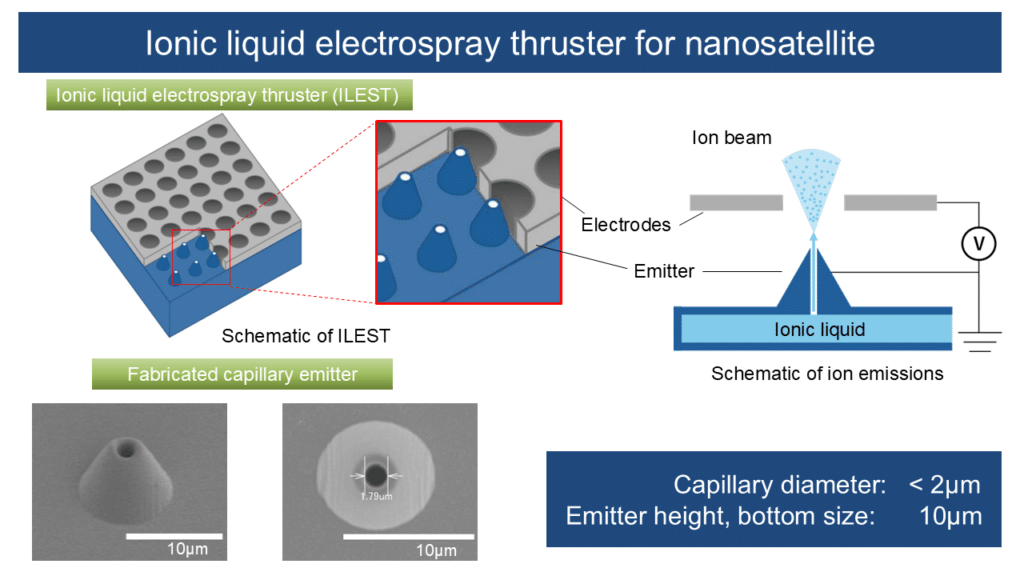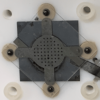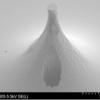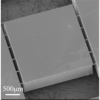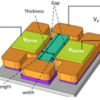Ionic liquid electrospray thruster for nanosatellite
Recently, launches of satellites weigh less than 10 kg, called nanosatellites are increasing. While these satellites can save development period and cost compared to the conventional types, their applications are limited since they do not have thrusters, which work as an engine, due to size and weight limitations. To expand the application of nanosatellite in space missions, there is a need to develop thrusters small enough to be mounted on, and a new type thruster called ionic liquid electrospray thruster (ILEST) has been attracting attention. In ILEST, ionic liquid is used as a propellant and is fed on to the tip of an emitter and ion emissions happen when the voltage is applied between emitter and electrodes. Ion emissions generate thrust around 10 to 100 nN per emitter, and an emitter array with tens of thousands emitters is fabricated to get satisfying thrust.
There are several types of emitters depending on their shape. One type of emitter, the capillary emitter, has a capillary inside and can passively supply ionic liquid to the tip by capillary action, making it suitable for practical use. Experiments have shown that the smaller capillary diameter is, it leads to better ion emission characteristics and thruster performance.
In this study, capillary emitters were fabricated with nm and µm scale 3D printing technology. This technology uses photoresist as a material and can fabricate high aspect ratio structure and complex shape which were difficult to fabricate by etching silicon. As a result, emitters with a capillary having less than 2 µm diameter were successfully fabricated, and at this capillary diameter fine thruster performance is expected. Furthermore, the size of each emitter is only 10 µm in height and base diameter. 30000~40000 emitters can be arrayed in 1cm2, well satisfying the demands of ILEST application for nanosatellites. This is a collaborative research with Yokohama National University.
